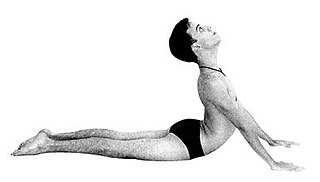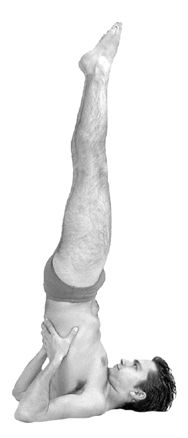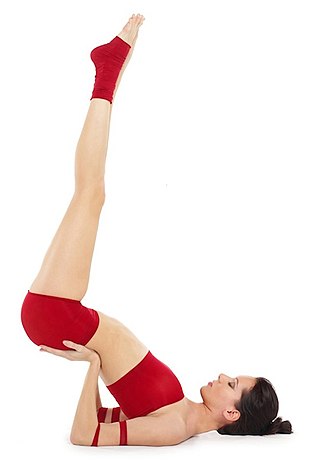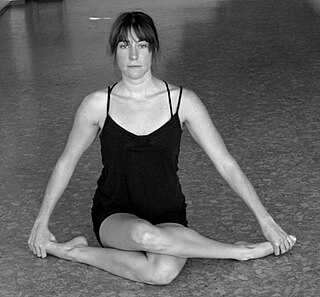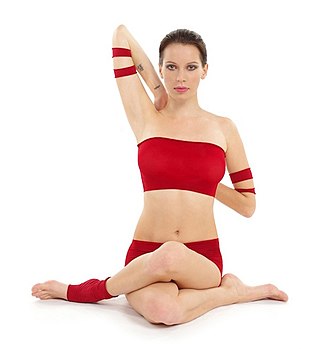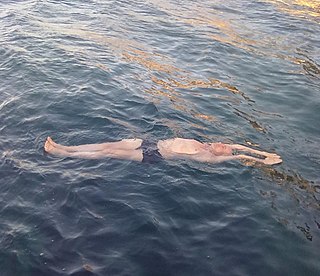Practice

Restorative Yoga sessions allow the body to slow down and relax in a small number of asanas. Each pose is held for longer than in conventional classes, sometimes for twenty minutes, so a session may consist of only four to six asanas. The long holding of poses is often assisted with props such as folded blankets, blocks, and bolsters to ensure the body is fully supported and so to allow the muscles to relax. [1] [2]
An early disciple of B.K.S. Iyengar, the yoga teacher and Yoga Journal editor Judith Lasater helped to popularize restorative yoga, based on Iyengar Yoga's asanas and use of props. [3] [4] [5] Lasater states that "you will need" a yoga mat, four yoga blocks, three firm bolsters, three hand towels, three eye bags, eight firm blankets, a broad 6 feet (1.8 m) long yoga belt, a folding metal chair with the front rung removed, and two 10 pounds (4.5 kg) sandbags. For home practice, she suggests substituting throw pillows, couch cushions, or large bags of rice or dry beans as improvised props. [6]
Lasater proposes twelve asanas and their variants, for a total of twenty poses, with detailed instructions that occupy much of her 2017 book Restore and Rebalance. The poses are reclining or supported variants of Baddha Konasana, Balasana (child's pose), Uttanasana, Downward Dog, Prasarita Padottanasana (wide-legged forward bend), Urdhva Dhanurasana (upward bow), Setu Bandhasana (bridge), legs up the wall, Sarvangasana (shoulderstand), Halasana (plough), Urdhva Paschimottanasana (upward-facing forward bend), and Shavasana. [7]
Restorative yoga is not a fancy way of taking a nap nor is it stretching, which can easily become another way to generate craving, which is definitely not relaxing. Instead of doing yoga, this form of yoga does us. Restorative asana practice provides a framework for openings of body, breath, and mind to occur naturally over time, without tightening, stretching, or collapsing.
Cyndi Lee,Yoga Body, Buddha Mind
The yoga teacher Cyndi Lee suggests a short sequence of six asanas, all with the use of supports: reclining bound angle pose (Supta Baddha Konasana), legs up the wall (Viparita Karani), a prone twist with both knees to one side (Jathara Parivartanasana), a sitting forward bend (Paschimottanasana), child's pose (Balasana), and corpse pose (Shavasana, with or without supports). [8]
Lee links the need for Restorative Yoga to the stress of modern life and the resulting habitual state of fight-or-flight, appropriate to emergencies but harmful when chronic. The biological response involves the hormone adrenaline signalling emergency, raising blood pressure, heart rate, and muscle tension, while resources are diverted from the digestive and reproductive systems, and from processes of cell growth and tissue repair; Restorative Yoga can in her view help to reverse that process. [9] Lee describes yoga relaxation as combining the active quality of standing to attention in Tadasana with the passive quality of lying down like a corpse in Shavasana. The combination offers in her view a middle path, receptiveness. [10]





